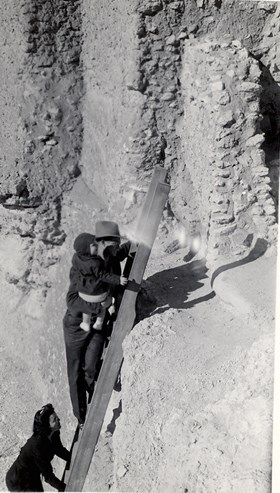|
The first European settlers to see Montezuma Castle arrived in the Verde Valley in the mid-1800's. From early on, it was a destination for curious travelers to what was then the New Mexico Territory. These travelers braved isolated and bumpy dirt roads, often in carriages or on horseback, to tour this prehistoric structure, initially believed to be built by the Aztecs of Mexico. 
NPS Image Many of these early tourists took artifacts from the site as souvenirs or carved their names on masonry walls and roof beams. Some looters went so far as to dynamite walls in their search for valuable antiquities. But there were also scholars and concerned citizens who realized that the structure could not sustain the kind of damage caused by both vandals and careless tourists. Their concern eventually reached the desk of President Theodore Roosevelt who, in late 1906, established Montezuma Castle as one of America's first national monuments. With its establishment as a National Monument, Montezuma Castle received increased attention and protection. Work was done throughout the 1920's and 1930's to restore and stabilize the ruin. However, annual visitation to the monument continued to rise, making the Castle more and more difficult to maintain. 
NPS Image In 1951, as visitation reached 50,000 people a year, Monument administrators decided that the structural integrity of the Castle could no longer accomodate the impact of so many individuals. It was also becoming increasingly difficult to ensure visitor safety as more and more people came to climb up into the Castle without any training or safety equipment. On October 1, 1951, public tours of Montezuma Castle were discontinued. Since then, visitation has continued to climb, peaking in 1996 at over 1 million annual visitors. This policy, established to protect the Castle from being "loved to death" is the primary reason it remains one of the best preserved cliff dwellings in North America. |
Last updated: December 5, 2023
